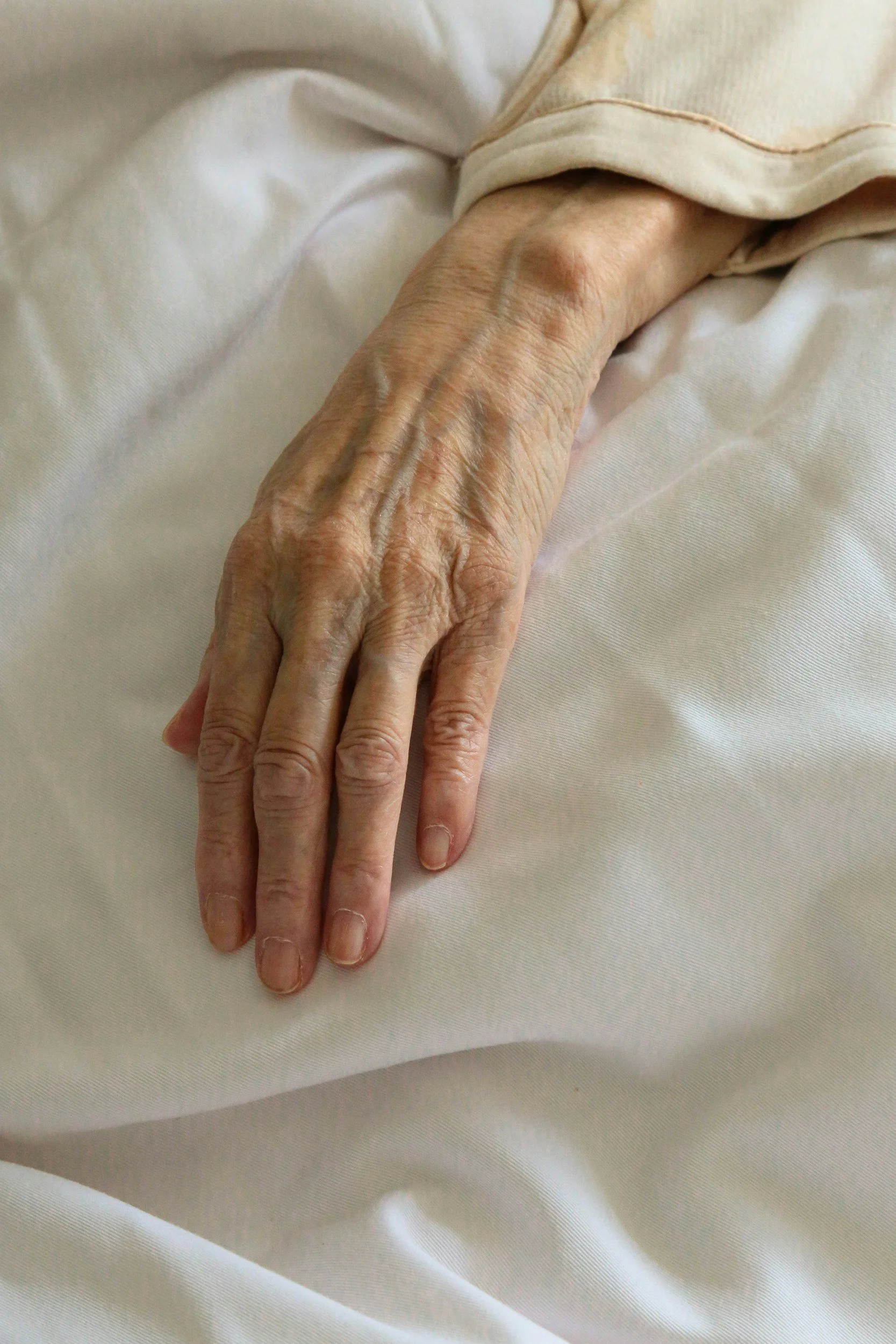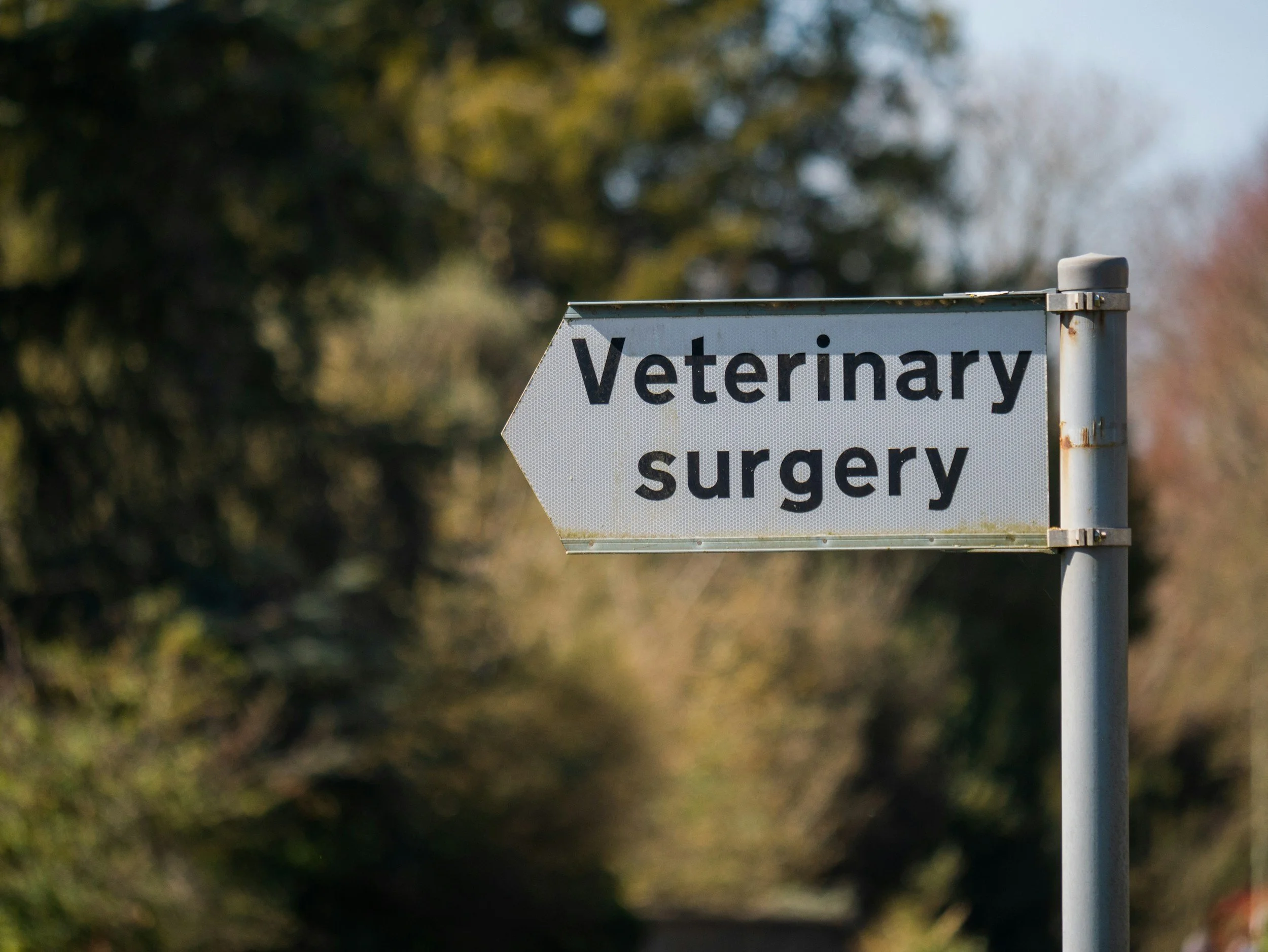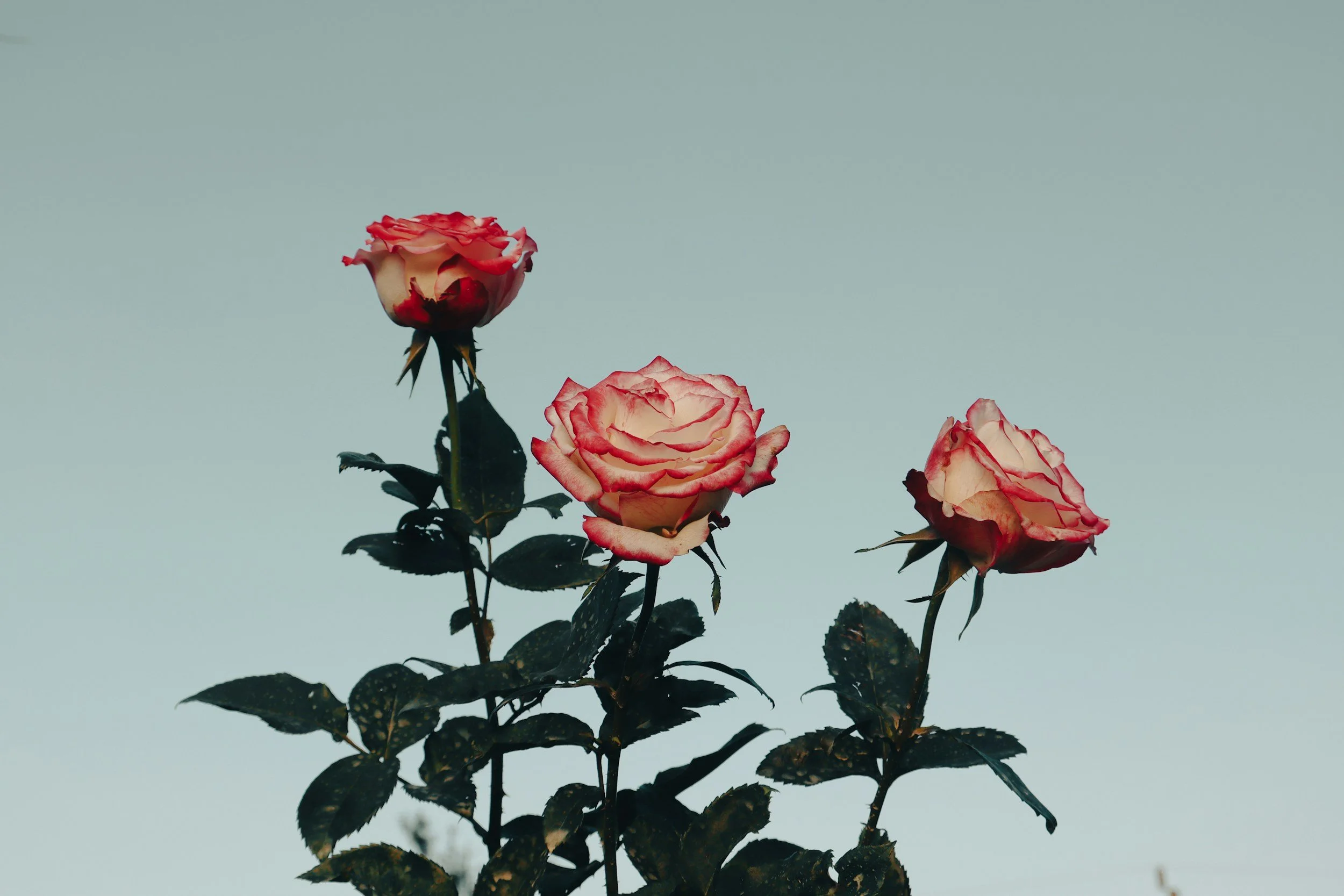Plots
My mother’s family is buried in a little cemetery at the edge of Magnolia, Iowa, population 175. It’s about forty minutes north of Omaha. “Don’t blink or you’ll miss it,” my dad used to say. Mom’s parents lay there, encircled by generations of relatives. Most had worked the surrounding land, their farms scattered across the Missouri River Valley.
Every Memorial Day when I was young, my family made the two-hour drive to Magnolia. On weeknights leading up to the holiday, after Mom finished the dinner dishes and I practiced my piano lessons, we’d load the kitchen table with artificial flowers and set to work coiling ribbon around grapevine rings, creating wreaths and wire-hanger stands. On the holiday weekend, we’d all pile into the minivan, off to decorate graves.
I knew very little about these people whose blood ran in my veins, whose headstones told me their most significant dates and not much more. As an adult, I’ve entered those dates into ancestry websites, asked questions, and constructed family trees. I’ve pieced together journeys from Germany and England to the States, when my relatives likely made their way to this tiny pocket of Iowa. I wonder what they knew about farming and purchased plots of land before they arrived, if they ever thought of the Indigenous feet that walked the same land for centuries before them.
In my family, owning property carries weight in life and death. Years before they died, my grandparents bought five side-by-side cemetery plots—one for each of them, and the other three for my mom and her two brothers. My grandparents have been buried for decades. My Uncle Richard now lies alongside them, recently lost to pancreatic cancer. The other two plots remain vacant.
When I was thirty, my dad had a sudden stroke. We spent the following week with him in intensive care, sleeping in hospital chairs, drinking weak coffee, watching his unconscious body for signs of hope. They never showed, and on the eighth day—it happened to be Father’s Day—we said our goodbyes. Despite the family plots, Mom had his body cremated. Ever since, Dad’s ashes have taken their rest on the piano next to their wedding portrait, surrounded by washed-out vacation Polaroids and headshots from school picture days, as well as faded, black-and-white photos of distant family members, some of whom lie in the ground near my grandparents.
The cemetery is one of the first—and few—destinations in Magnolia. A single, narrow dirt road winds through it. Dad used to get so frustrated when other visitors didn’t pull over far enough to let others pass. As he’d inch around their parked cars, Mom would point out the markers of her relatives, reminding us where the plots were, even though we already knew.
After we laid wreaths on my grandparents’ graves, my parents allowed my brother, sister, and I to explore. To be courteous to the dead, we carefully walked around the plots’ edges, though they weren’t always obvious. Ground markers tricked us; hidden in the grass, they required extra scanning and searching. As we traversed uneven rows of headstones, I’d try to find the oldest which I learned to recognize by their narrow shape, rounded top, and aged, white marble or sandstone. There were a few from the Civil War. We’d pass the time subtracting birth years from death years to determine who’d lived the longest or who’d died the youngest.
I often wondered what happened to the decorations we—and others—brought for the graves. Did the dead appreciate them? Did someone eventually throw them away? Did the flowers decompose into the grass?
I later learned that sometimes Mom would retrieve her wreaths so she could reuse them the following year. I bet our relatives appreciated her resourcefulness.
The first burial I attended was for my mom’s father. I was eight. “When I die, just throw me to the hogs,” Grandpa used to joke. I remember the sniffles of attendees into their handkerchiefs, great-aunt Marge snapping photos of Grandpa in his casket, and my grandmother’s drained, pale face. She lived another twelve years without him. She died during a winter so bitterly cold—the wind was too harsh and the ground too frozen—we couldn’t hold a graveside service after her funeral. Her body remained at the mortuary until the Magnolia ground thawed. My dad’s parents both passed when I was a teenager. With few acquaintances and little family, there was no service for either of them. Both were cremated, their ashes quietly placed in a pre-paid cemetery plot in Omaha. I’ve attended only a handful of other funerals: When the father of a grade-school friend died of a heart attack. When a close friend of my boyfriend in graduate school killed himself. When a friend of mine did the same a few years later.
My husband’s maternal grandfather died not long after Nick and I married. We held his visitation at an old funeral home in Kansas City, where Frank Sinatra sang “My Way” on repeat. As the reception hall filled with men who introduced themselves as business associates coming to pay their respects, Nick and I joked it was like an episode of The Sopranos. The burial took place in a Catholic cemetery in the rain. We huddled under the tent as the casket lowered into the ground, surrounded by family stones all etched with Italian names. Nick’s paternal grandpa died a few years later in the Ozarks, where he’d lived all his life. We held that funeral in a small, Mormon church, and nearly the entire community joined us at the gravesite. The cemetery reminded me of Magnolia: small, quiet, surrounded by farmland. Standing in the summer wind, the heels of my pumps sinking into the grass, I thought of my own grandparents.
Nick and I have no need for plots with formal markers. We bristle at the environmental impact of embalming and burials and scoff at the costs of coffins, funerals, and tombstones. “It’s literally throwing money into a hole in the ground,” Nick says. We regard death with a sense of finality—our physical bodies will break down, the constellation of energy released back to the universe. We’ve kidded about having our ashes pressed into a vinyl record, shot out of a cannon, or launched into space. We issue each other challenges: “Release my ashes at the top of Mt. Rainier.” “Scatter mine over the Grand Canyon.” “Mix them with ink and tattoo them on your chest.”
Though I appreciate Nick’s lightheartedness and openness in discussing the inevitable—our life one day without each other—I’m enchanted by the peacefulness in my mother’s voice after she visits her family graves. Every Memorial Day, she takes the trip we used to as a family. After my dad died, she’d pick up Uncle Richard on the way. Now, she goes alone. She lays her wreaths and arrangements in Magnolia. Then she drives over to Missouri Valley where her father’s family rests, and afterwards dips down to Forest Lawn Cemetery in Omaha to visit my dad’s parents. Then she heads home, usually stopping at Casey’s along the way for a gas station cappuccino.
The most absolute thing about life is that it ends in death, yet many people don’t want to talk about it. While I’ve spent years seeking to better understand my views of death—working with a counselor after losing my dad; immersing myself in Buddhist studies; reading books by Joan Didion, C.S. Lewis, and others who’ve documented their experiences with loss and grief—my family is content with little explanation, just gravesites to visit and a vague, insistent sense of being reunited “on the other side.” This abstract, undefined belief has traversed my relatives for generations, each loss endured without too much scrutiny. Plus, there’s the sense that a cemetery plot is forever. In fact, some form of “forever” is right there in the purchase agreement for the plot: the cemetery promises to maintain the site indefinitely, ensuring the interred a permanent resting place in this physical world. Even in death, there is an attachment to the land. It’s a curious reconciliation: the trappings of where and how to bury our loved ones’ physical bodies so we can “visit” them once they’re in the afterlife.
A few years ago, Mom mailed me a copy of her will and durable power of attorney, to which she paperclipped a handwritten note: Don’t look at these. Just bury them in a drawer for the day you need them. Want to take care of things so you won’t have to.
From time to time, I discuss Mom’s plans with her. “Okay, your arrangements are in place, but what about all your stuff?” She’s lived in the same house for twenty-five years: four bedrooms, two-car garage, full basement, full attic. After we kids moved out and Dad died, she filled every room with antiques and collectibles, as well as items from our childhood unpacked and on display. She can tell the story behind every framed school art project, every teacup in her curio cabinet, every vintage can above the kitchen stove.
“I don’t care what you do with it when I’m gone, but for now, I like it where it is,” she responds. Then she’ll ask, “It’s okay if not, but is there anything here you’d like to keep after I die?”
This is the closest we get to discussing her last wishes. I tell her I might like Grandpa’s armchair. It will complement the wooden desk I use every day, which Grandpa’s brother, Floyd crafted in the 1910s. The desk was handed down to me before I left the Midwest in 2008—the same year Dad left us.
“Oh, good choice,” she says. We don’t discuss how I’ll transport it 1,500 miles to my small house in Seattle, or where I’ll put it.
Recently, Mom texted me a photo while I was grocery shopping—a picture of a headstone with my dad’s name on it, taken in the Magnolia cemetery on a bright, sunny day. I can see Mom’s shadow across the foreground.
“?” I texted back.
“Meant to tell you,” she replied. “A while back I had this placed. Finally learned how to take photos on a phone.”
“Are his ashes there?” I tapped.
“No, they’re at home with me. I just wanted to get this done.”
I stopped my cart between the broccoli and spinach. A heavy ache enveloped my heart, and tears fell on the can of tomatoes I’d picked up in the previous aisle. It’d been thirteen years since Dad died, but the heavy, stone marker claiming the plot brought with it the weight of his death all over again, his full name so solid and old in the stone. I focused on the surname that had once been mine: Schlievert. As a kid, it frustrated me; teachers never pronounced it correctly, and I’d struggled learning to write it in cursive. But I’d always admired the grace of Dad’s signature. I loved watching him sign that name on school permissions slips and checks for my piano lessons.
Once, as a teen, I found a 1987 datebook Mom bought in an attempt to become more organized. She hadn’t used it. As I flipped through the empty pages I wondered why she’d held onto it. Then I understood. There was one entry, one word, inked in her handwriting: Dad. Marked on the day of her father’s passing.
I am struck by the physicality of it all: the bodies that grow old in life and break down in death, the plots of land we visit and the solid stones we engrave, the items we surround ourselves with, the ashes we keep to remain close to those we’ve lost. I personally appreciate the less corporal ways of connection: the memories we store and stories we share, the compassion we practice and the empathy we extend, the love we keep alive between us, across us, beyond us.
At home, I set my grocery bags on Floyd’s desk. I think about how, for years, my dad waited at the piano for my mom. Now he waits in the cemetery, too.
I look again at the photo. This time, I see my mother’s name and birth date also etched on the gravestone, next to my dad’s. My body feels immobile, like marble, as I realize her quiet declaration of her own mortality.
-Chelsea Yates
Chelsea Yates is originally from northeast Nebraska. She now lives in the Pacific Northwest and is a writer for the University of Washington.




















